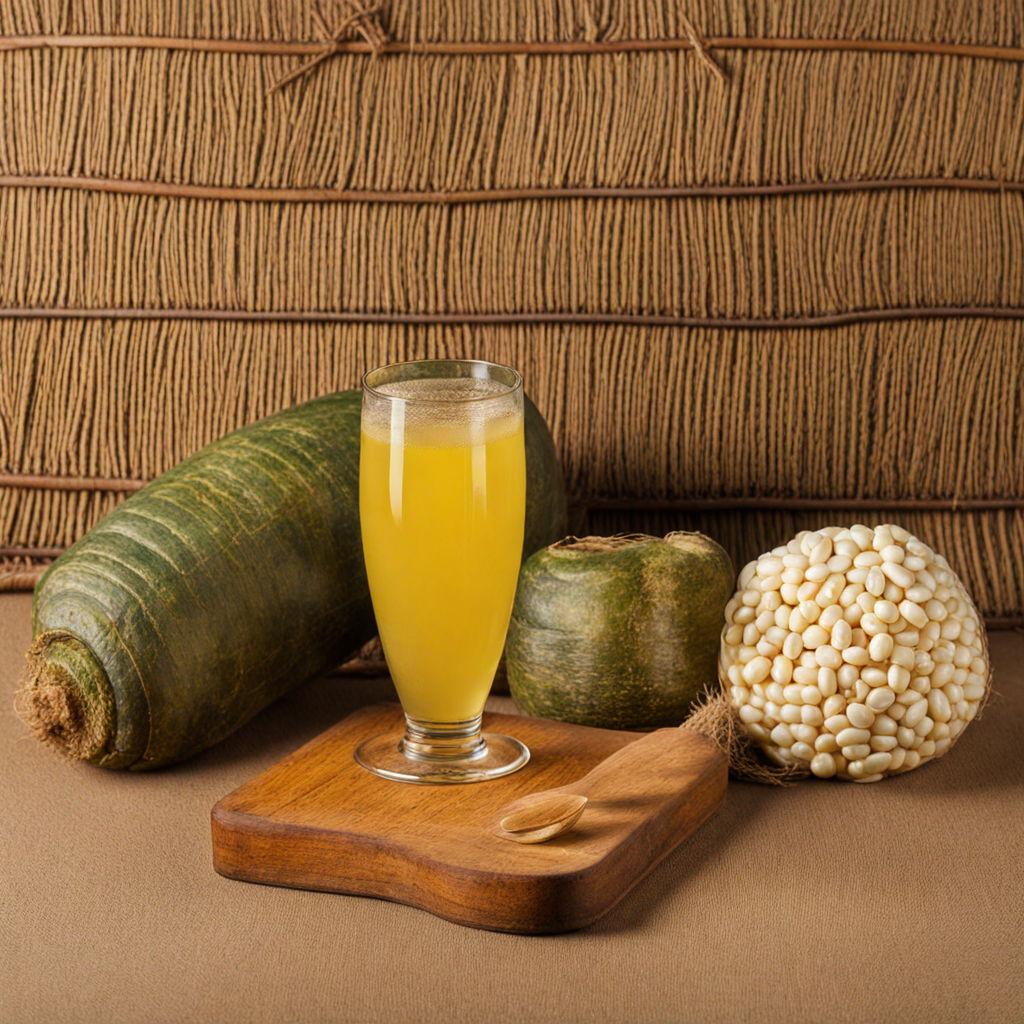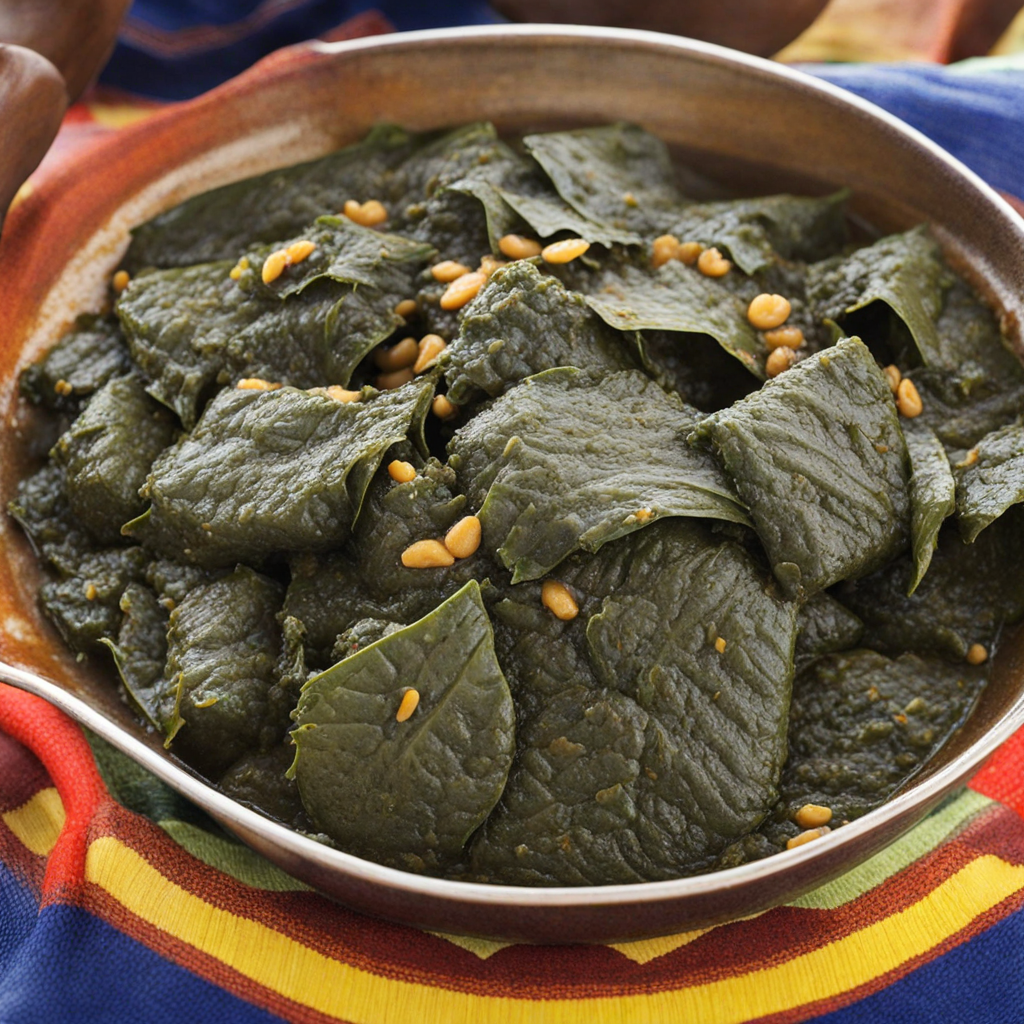Munkoyo
Munkoyo is a traditional Zambian beverage that is both refreshing and unique, often enjoyed during social gatherings and celebrations. This drink is made from the fermented roots of the Munkoyo plant, also known as the "mukoyo" or "mukoya," which is indigenous to Zambia. The preparation process involves boiling the roots, then cooling the mixture before allowing it to ferment naturally. The result is a slightly effervescent drink with a pleasantly tangy flavor profile that can be compared to a mild, sour beer or a lightly fermented cider. The taste of Munkoyo is truly distinctive, characterized by its smooth texture and a light sweetness that balances its acidity. The fermentation process imparts a subtle complexity, with earthy undertones that reflect the natural ingredients used. Depending on the fermentation time, the drink can vary in strength and flavor, making each batch a unique experience. Often enjoyed chilled, Munkoyo is a perfect accompaniment to Zambian dishes, enhancing the overall dining experience with its refreshing qualities. Munkoyo is not just a drink; it embodies the rich cultural heritage of Zambia, often served during communal events, family gatherings, and traditional ceremonies. Its preparation and sharing are steeped in communal ties, reflecting the Zambian spirit of togetherness. As you sip on this delightful beverage, you're not only tasting the unique flavors of Zambia but also participating in a cherished tradition that celebrates community and connection.
How It Became This Dish
The History of Munkoyo: A Zambian Culinary Tradition Origins and Ingredients Munkoyo, a traditional Zambian drink, has deep roots in the cultural fabric of the country, particularly among the Bemba and other northern tribes. Its origins can be traced back to the indigenous peoples of Zambia, who harnessed the natural resources of their environment to create this unique beverage. Munkoyo is made primarily from the fermentation of the roots of the munkoyo plant (often referred to as the 'mukuyu' or 'munkoyo' plant), which is a type of yam or tuber. This plant thrives in the lush soils of Zambia, and the process of preparing Munkoyo combines both agricultural knowledge and culinary tradition. The drink is typically produced by boiling the roots to extract their flavors and nutrients, after which they are cooled down and mixed with water. The fermentation process is then initiated by adding a starter culture, often consisting of a previously fermented batch of Munkoyo, which introduces beneficial wild yeasts and bacteria. This fermentation transforms the drink into a slightly alcoholic, tangy, and effervescent beverage that embodies the essence of Zambian life. Cultural Significance Munkoyo is not merely a drink; it is steeped in cultural significance and communal identity. Traditionally, it serves a dual purpose as both a beverage and a ceremonial offering. In many Zambian communities, Munkoyo is a staple at significant events, including weddings, harvest festivals, and initiation ceremonies. These gatherings often revolve around communal sharing, and Munkoyo symbolizes unity, hospitality, and the spirit of togetherness. In the Bemba culture, for instance, Munkoyo is often served to welcome guests and honor their presence. The act of sharing this drink reinforces social bonds and demonstrates the values of generosity and communal living that are central to Zambian society. The drink is also associated with traditional healing practices, as it is believed to possess medicinal properties that can aid digestion and promote overall well-being. Furthermore, Munkoyo is often linked to rituals that celebrate the connection between the community and the earth. By using local ingredients and traditional methods, the drink embodies a respect for nature and the ancestral knowledge passed down through generations. This connection to the land is not only vital for sustenance but is also a source of cultural pride. Development Over Time As Zambia transitioned through various historical phases, including colonialism and independence, the production and consumption of Munkoyo evolved. During colonial rule, traditional practices faced significant challenges, as Western influences began to permeate Zambian society. Many indigenous foods were marginalized, and commercial beverages gained popularity. Nonetheless, Munkoyo persisted as a symbol of cultural resilience, often prepared and consumed in more rural areas where traditional practices remained strong. With Zambia's independence in 1964, there was a revitalization of interest in indigenous cultures, including culinary traditions. The government encouraged the preservation of cultural heritage, and Munkoyo experienced a renaissance as Zambians began to embrace their roots. The drink became a symbol of national pride, and efforts were made to document and promote traditional recipes and methods. In recent decades, Munkoyo has also seen a shift in its presentation and accessibility. While still predominantly produced in households, there has been an increase in small-scale commercial production. Local entrepreneurs have recognized the potential of Munkoyo as a unique cultural product, leading to the establishment of small breweries and artisanal production facilities. This commercialization has allowed Munkoyo to reach a wider audience, both domestically and internationally, as more people become curious about Zambian cuisine. Moreover, the global trend toward natural and organic products has played in favor of Munkoyo, as consumers seek out authentic, locally sourced beverages. The drink's unique flavor profile, coupled with its health benefits, has attracted the attention of food enthusiasts and health-conscious individuals alike. As a result, Munkoyo has found its way onto menus in restaurants that specialize in African cuisine, as well as in international food festivals that celebrate cultural diversity. Contemporary Relevance Today, Munkoyo continues to hold a special place in Zambian culture. It is often prepared during family gatherings, community events, and traditional ceremonies. The drink has also adapted to modern tastes, with some variations incorporating additional ingredients such as ginger or honey, enhancing its flavor and appeal. Amidst globalization and the rise of fast food, there is a growing movement among younger Zambians to reconnect with their culinary heritage. This has led to a resurgence in traditional food practices, with Munkoyo often at the forefront. Cooking classes, cultural festivals, and social media platforms have all contributed to the revival of interest in traditional foods, ensuring that Munkoyo remains relevant for future generations. Furthermore, Munkoyo embodies the spirit of sustainability, as it utilizes local ingredients and traditional fermentation methods that align with contemporary values of eco-consciousness and responsible consumption. As Zambians continue to navigate the complexities of modern life, Munkoyo serves as a reminder of their rich cultural heritage and the importance of community and connection to the land. Conclusion In conclusion, Munkoyo is much more than a traditional Zambian beverage; it is a symbol of cultural identity, resilience, and community. From its origins in the natural landscapes of Zambia to its contemporary adaptations, Munkoyo reflects the rich tapestry of Zambian history and the enduring significance of traditional food practices. As Zambians continue to celebrate their culinary heritage, Munkoyo stands as a testament to the power of food in fostering connection, tradition, and pride. Through each sip of this fermented drink, one can taste the history, culture, and spirit of Zambia.
You may like
Discover local flavors from Zambia







